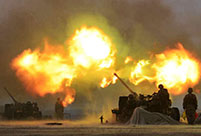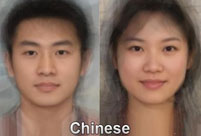BEIJING, Nov. 9 -- Beijing is catching global eyes as leaders of Asia-Pacific economies meet at a suburban lake resort when their regional cooperation initiative comes to a crossroads for reshaping.
Hosted by Xi Jinping, the high-profile rendezvous at the Yanqi Lake, which will gather international political heavyweights including Barack Obama and Vladimir Putin, is expected to witness a proud and indelible moment in the history of the Asia-Pacific Economic Cooperation (APEC).
High on the meeting's agenda are the launch of the process of a regional free trade area and promoting regional interconnectivity through infrastructure.
If all goes well, the Beijing meeting will serve as another opportunity for the world's largest developing economy to make greater contributions to regional and world development.
President Xi proposed an Asia-Pacific dream when addressing the APEC CEO Summit Sunday, telling over 1,500 business people that "the development prospect of our region hinges on the decisions and actions we take today."
"We are duty-bound to create and fulfill an Asia-Pacific dream for our people," Xi said.
This is the second time that China has played host to APEC leaders after it joined the regional grouping in 1991.
China hosted the Shanghai APEC in 2001, shortly after Beijing secured its hosting right for the 2008 Olympic Games whereas the country's entry into the World Trade Organization was just around the corner.
Its aspiration of closer integration with the world and its expectations for a brighter future at the time were translated into pride and joy the whole nation felt towards the Shanghai APEC.
Profound changes have since taken place - geo-politically, economically, and technologically. APEC economies now account for approximately 40 percent of the world's population, 57 percent of world GDP and 48 percent of world trade.
The region is widely regarded as a global growth engine with unprecedented development potentials, while its strategic importance is being increasingly recognized.
China itself has become the world's second largest economy, and it is expected to shoulder more international responsibility on the global stage.
It is only natural that the quest to build a just and reasonable international order in tune with the common interests of all has now become a key undertaking for the Asia-Pacific.
To do so, China has proposed to design a road-map for the launching of the Free Trade Area of the Asia-Pacific (FTAAP) and a blueprint for connectivity development among APEC members.
The impasse in the Doha round of global multilateral trade talks gave impetus to a proliferation of smaller free trade agreements (FTAs) in the region. They brought some benefits but also unwanted troubles: different tariff schemes, complicated rules of origin, trade discrimination over countries excluded from the FTAs, to list a few.
Against that backdrop, APEC economies' enthusiasm to integrate the varying and overlapping FTAs is understandable.
If APEC members reach consensus on launching the FTAAP process in the upcoming economic leaders' meeting, it will lay a sound foundation for the regional free trade zone and send a heartening signal to the global free trade momentum.
Meanwhile, with its enormous economic scale, APEC members are also wary of the huge gaps among them, many of which are still developing economies.
Regional economic development hinges on the connectivity of the physical infrastructure, of the standards and technology, as well as of the personnel, with a major problem of being lack of funds.
The good news is that 21 Asian countries, including China and India, signed an MOU to set up the Asian Infrastructure Investment Bank last month.
China has also pledged to contribute 40 billion U.S. dollars to set up a Silk Road Fund to strengthen connectivity and improve cooperation in the country's neighborhood.
The exciting prospects nonetheless invites one to look back to the past for inspiration.
It has been 25 years since the APEC was established in 1989 to further enhance economic growth and prosperity for the region and to strengthen the Asia-Pacific community.
Over the past two and a half decades, the young but robust grouping has thrived on openness, inclusiveness, and on its celebration of differences while seeking common grounds.
China has bonded with the organization closely since its entry, thanks to their shared philosophy for cooperation and pursuit of growth and prosperity.
For 23 years, APEC has offered China a broad stage for regional integration, whereas China has shared the fruits of its reform and opening-up drive with the entire Asia-Pacific and beyond.
The country impressed the world during the 1997 and 2008 financial crises for bravely sharing weal and woes with other economies and taking resolute counter-measures. It has hosted hundreds of events and meetings to facilitate regional collaboration on telecommunication, mining, agriculture and science and technology.
With concrete deeds and earnest efforts, China has lived up to its promise of building a community of "common destiny" in the Asia Pacific.
Granted, there would be challenges and obstacles on the way to regional integration.
But as one Chinese saying goes, "there are no mountain higher than man could ever scale, and there are no journey longer than man could ever travel."
Indeed, hardly had anyone 25 years ago envisioned the vitality of the Pacific Rim we boast today.
Beijing's endeavor to reshape the APEC initiative at a time of staggering world economic recovery - by expanding free trade and improving connectivity - will no doubt leave an indelible imprint in the course of regional cooperation and global economic development.
 World Pole Dance Championship in China
World Pole Dance Championship in China In pics: PLA stages live-fire drill in NE China
In pics: PLA stages live-fire drill in NE China  59-year-old Liu Xiaoqing still looks stunning
59-year-old Liu Xiaoqing still looks stunning  Standard faces for each countries in the world
Standard faces for each countries in the world Shocking! Photos of Chinese fighters revealed
Shocking! Photos of Chinese fighters revealed Images of angels in white: At work v.s off work
Images of angels in white: At work v.s off work  Post-85s female pilots and their mission
Post-85s female pilots and their mission Netizens fall in love with champion swimmer Ning Zetao
Netizens fall in love with champion swimmer Ning Zetao Vibrant 21-year-old and her own Cheongsam brand
Vibrant 21-year-old and her own Cheongsam brand Top 10 most dangerous jobs in the world
Top 10 most dangerous jobs in the world  Top 10 fifth generation jet fighters in the world
Top 10 fifth generation jet fighters in the world Top 10 Chinese goddesses
Top 10 Chinese goddesses  Top 20 hottest women in the world in 2014
Top 20 hottest women in the world in 2014 Top 10 pure beauties in showbiz
Top 10 pure beauties in showbiz  Top 10 world's highest-paid models 2014
Top 10 world's highest-paid models 2014 The most gorgeous Chinese women
The most gorgeous Chinese women Top 10 most handsome faces in Asia
Top 10 most handsome faces in AsiaDay|Week|Month